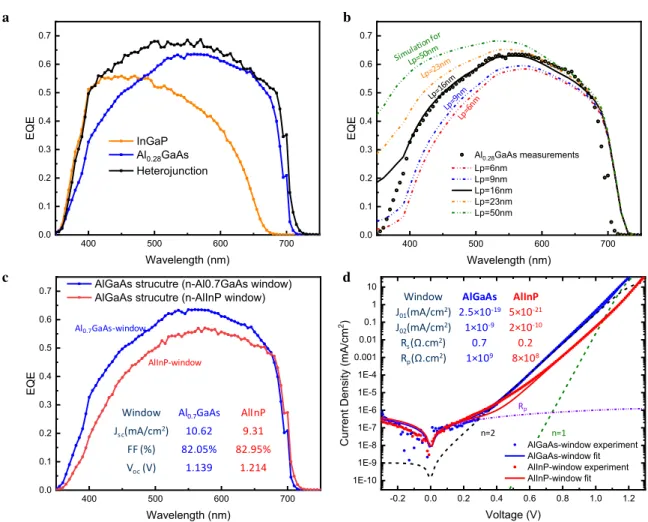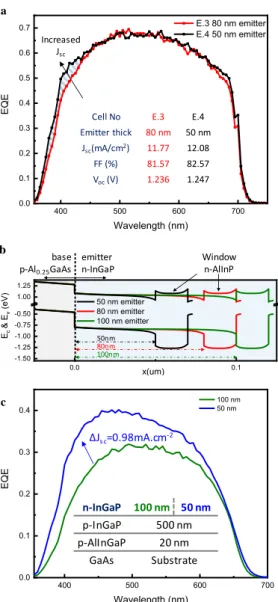1.73 eV AlGaAs/InGaP heterojunction solar cell grown by MBE with 18.7% efficiency
Texte intégral
Figure




Documents relatifs
Using real-time in-situ measurements and parametric squircle fitting of the oxide apertures resulting from the anisotropic oxidation starting from circular mesas, we
Nous supposons que les enseignants ont intériorisé les principes qui fondent le rôle de l’enseignant dans une approche par compétences puisque nous leur avons proposé
There is an increasing interest in metal-semiconductor-metal photodetectors (MSM) because of their high speed, their planar structure which is compatible with
The tandem structure consists of a thin heterojunction top cell made of indium gallium phosphide (InGaP) on gallium arsenide (GaAs), mechanically stacked on a relatively thick
The light and heavy hole masses, the relative band alignments of GaAs and AlGaAs and the quantum well width were treated as fitting parameters.. Figure 2 shows
L’archive ouverte pluridisciplinaire HAL, est destinée au dépôt et à la diffusion de documents scientifiques de niveau recherche, publiés ou non, émanant des
From the LF drain noise behaviour versus gate and drain biases and temperature (90K to 300K), pseudomorphic devices are found to present lower drain current noise and less
interferometer, which was controlled by a Lamb dip stabilized 633nm He-Ne laser. Direct frequency locking of semiconductor lasers based on atomic or molecular lines is important



